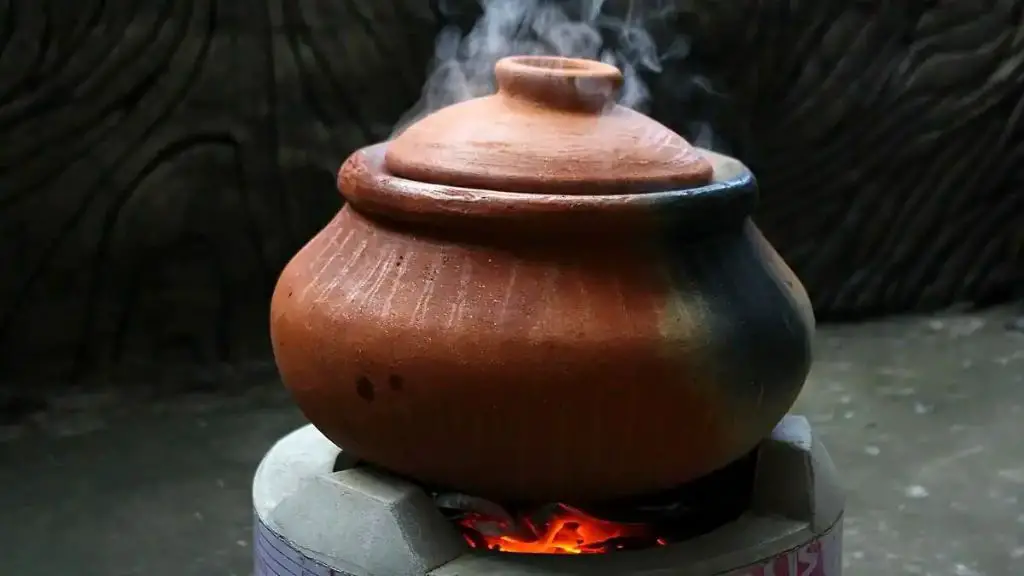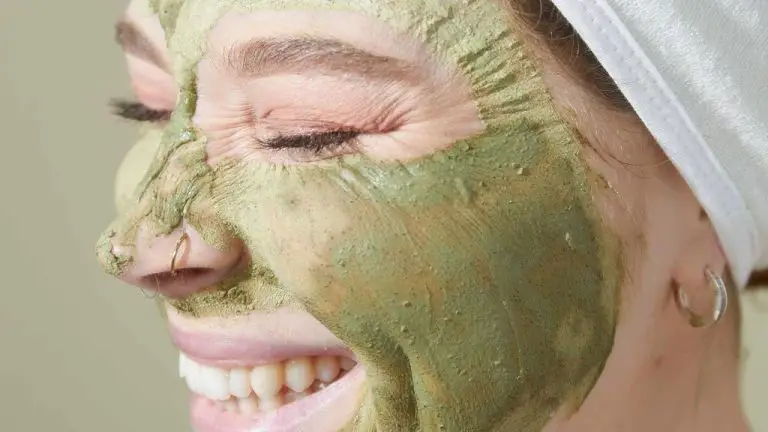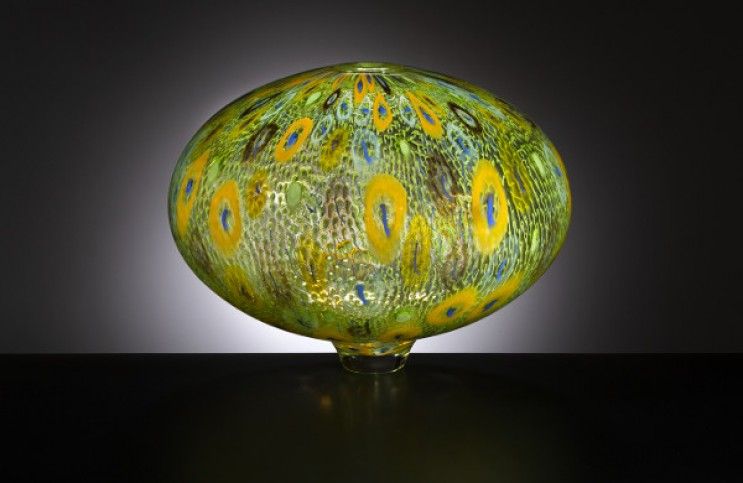How Do You Heat A Room With Terracotta Pots?
Terracotta pot heating is an ancient technique that uses the heat retention properties of clay pots to warm rooms and spaces. The main premise involves placing a heat source, traditionally a candle or oil lamp, inside a terracotta pot to heat it up. The heated terracotta then radiates gentle warmth into the surrounding area. By using multiple pots, you can heat a room without electricity or modern heating methods.
How Terracotta Pot Heating Works
Terracotta pots work as heaters because of a few unique properties of the material. Terracotta is made from clay that has been fired at high temperatures. This process makes the clay porous and allows it to absorb and hold heat very effectively [1]. Additionally, terracotta has high thermal mass, meaning it can store large amounts of heat energy. When a heat source like a candle is placed inside the pot, the terracotta absorbs the heat and slowly radiates it back into the room over time.

As the candle burns inside the pot, the terracotta acts as a thermal mass, soaking up the heat. The pot continues radiating this warmth long after the candle has gone out. In this way, a few terracotta pots with candles can raise the ambient temperature of a room by a few degrees, providing supplemental heating.
Choosing the Right Pots
When selecting terracotta pots for heating, it’s important to choose the right type of pot. The most effective pots for heating are unglazed terracotta pots.
Unglazed pots absorb more moisture which allows the water inside to evaporate more quickly. This evaporation process releases heat. Glazed pots prevent absorption and evaporation, making them less effective.
The size of the pots also matters. Larger pots release more heat than smaller ones. However, pots that are too large can be cumbersome to arrange and control heat effectively. Most experts recommend using pots between 4-6 inches in diameter as a good balance.
The shape of the pots can also impact heat distribution. Cylindrical pots release heat more directionally while round pots distribute warmth in a radial pattern. Consider the layout of the space when choosing pot shapes.
Opt for plain, undecorated flower pots without holes when using this heating method. The goal is to contain the water and allow for maximum evaporation through the porous clay walls of the pot.
Filling the Pots
The pots must be filled with a material that will help retain and evenly distribute heat. There are a few common options for filling the pots:
Sand
Sand works well as an insulator to hold heat inside the pots. Plain sand can be used, but adding rock salt, crushed bricks, or even river rocks to the sand will help retain heat for longer (1). The sand should fill the pots up to 1-2 inches from the top rim.
Water
Filling the pots about halfway with water and then adding pebbles or stones can also effectively retain heat. The water helps distribute warmth while the pebbles give more surface area (2). Be careful not to overfill if using this method.
Oil
Filling the pots about 1/3 full with cooking oil and adding rolled up tin foil or copper scourers will soak up and transmit heat. The oil helps spread warmth evenly. Use a high smoke point oil like canola or peanut (1).
Arrangement and Placement
When arranging your terracotta pot heaters, you’ll want to group them together near seating areas or beds where you want to direct the heat. Group 3-5 pots together for better heat dispersion. Place the grouped pots near sofas, chairs, beds, or other furniture where people gather and want warmth.
For best results, position your grouped terra cotta pot heaters along southern facing walls or windows. The pots will capture heat from the winter sunlight coming through southern exposures. Avoid placing the pots along northern walls or windows, as these get little direct sunlight in winter.
Make sure to leave space between the pots and any furniture or curtains, about 12-18 inches. This prevents any risk of fabrics or upholstery getting too hot. Avoid clustering the pots too densely together – leave 3-4 inches between pots for air flow.
Heating the Pots
There are a few different ways to provide heat to terracotta pot heaters, but the most common and effective methods involve using sunlight, candles, or lamps.
Sunlight can be used to passively heat terracotta pots when placed in a sunny spot, like a south-facing window. The pots will absorb the sun’s warmth during the day and radiate it back into the room at night. Rotate the pots occasionally so all sides receive equal sunlight exposure. This is a simple, free way to harness solar energy for heating.
Candles are the classic heating source used with terracotta pot heaters. Place a tea light or votive candle in a glass container inside the pot to provide several hours of warmth. Use caution and never leave burning candles unattended. Group multiple pots together to increase the heated area.[1]
Finally, lamps with bulbs can be used inside the pots instead of candles. Opt for low-wattage bulbs that produce more warmth than light. Take precautions against tipping and use appropriate wattage for lamp fixtures. Lamps allow adjustable heating levels.
Maintenance
Terracotta pots will require some regular maintenance to keep them working effectively and looking their best. Over time, the pots may accumulate mineral deposits from the water and dirt or dust on the surfaces.
To clean terracotta pots, use a soft brush or sponge and warm, soapy water. Avoid abrasive cleaners or scrubbing too hard, as this can damage the porous clay material. For tough stains, a vinegar solution can help break down mineral buildup. Rinse well after cleaning. For pots with plants, focus on cleaning the exposed outer surfaces and avoid getting water on the soil. Pressure washing is another effective cleaning method for empty pots.
The water in the pots will need occasional replenishing as it evaporates. Check pots daily and refill with warm water as needed to keep them working efficiently. Wipe any water condensation that accumulates on the outer pot surfaces as well.
Safety Tips
When using terracotta pots for heating, it’s important to keep safety in mind. According to this article, clay pot heaters can pose fire hazards if not used properly.
To prevent fires, always directly supervise the pots when in use. Do not leave them unattended. Make sure they are placed on a non-flammable surface away from anything combustible like curtains or furniture.
Check the pots frequently while heating to ensure the tea lights remain upright and haven’t tipped over. Extinguish the candles before going to sleep or leaving the house.
Keep a fire extinguisher nearby in case of emergencies. Never place the pots on carpets or rugs where embers could fall and ignite the floors.
Proper supervision and fire prevention measures are crucial for safely using terracotta pots as heaters.
Cost Savings
Terracotta pot heating can provide significant cost savings compared to traditional heating methods like central heating or space heaters. Some key points on cost savings:
The materials needed – terracotta pots, tealight candles, and possibly sand or pebbles – are very inexpensive, especially compared to heating an entire home or room with a furnace or electric heater. A basic setup can cost under $10 (source).
The operating costs are also low. Tealight candles are inexpensive, costing only 10-25 cents each, and burn for around 4-6 hours (source). This compares very favorably to the energy costs of traditional heating over the same time period.
Terracotta pot heating can act as a supplementary heating source to reduce reliance on central heating. By heating only the space immediately around you, less energy is wasted heating empty rooms or unused spaces (source).
Overall, terracotta pot heating provides localized warmth at a fraction of the cost of heating an entire building. The energy savings can be substantial for the initial investment required.
Additional Tips and Considerations
Beyond simply heating a room, terracotta pot heaters can provide aesthetically pleasing accents as well. Consider pairing your terracotta pot heater with decorative candles or essential oils for pleasant scents. Sand or pebbles can also be placed in the bottom of the pots under the candles to add visual interest.
Terracotta pots come in a variety of earthy tones from oranges to browns, so select colors that will complement your existing decor. Painting or staining the pots is another option if you want them to blend in or stand out.
If you want to use your pot heater outdoors on a patio or deck, make sure to use electric or solar-powered candles instead of regular candles which can blow out. Citronella candles can help repel mosquitos and other insects in outdoor settings.
During the summer months, terracotta pot arrangements can serve as attractive planters for flowers, herbs, and other plants. Simply remove the candles and place a drainage tray inside before filling with soil and seeds.



